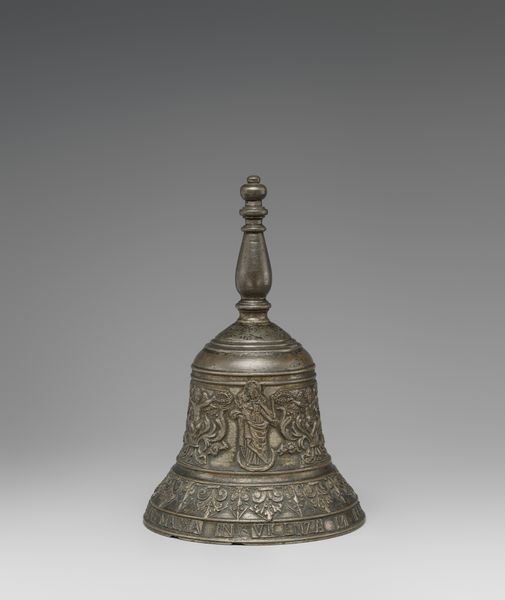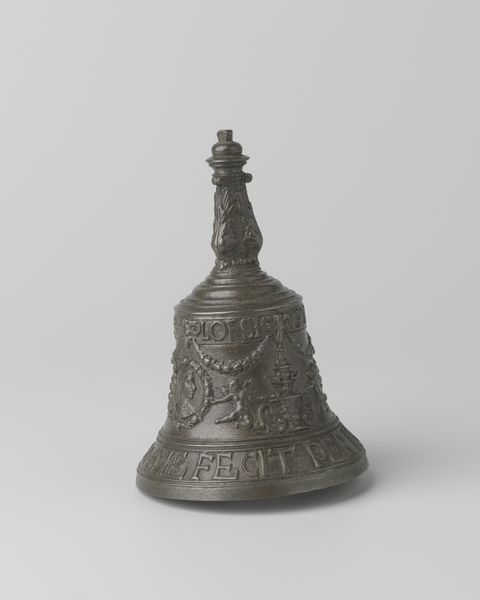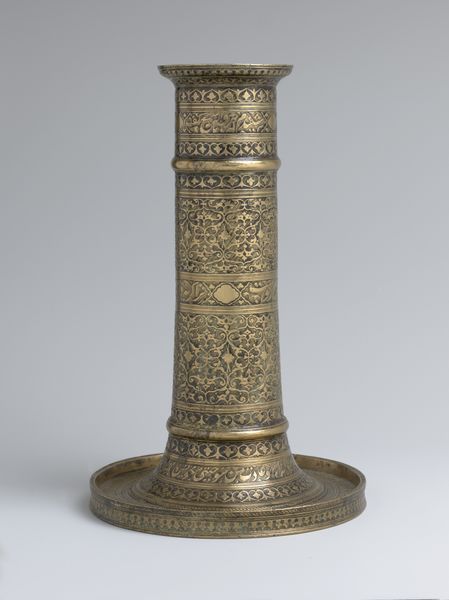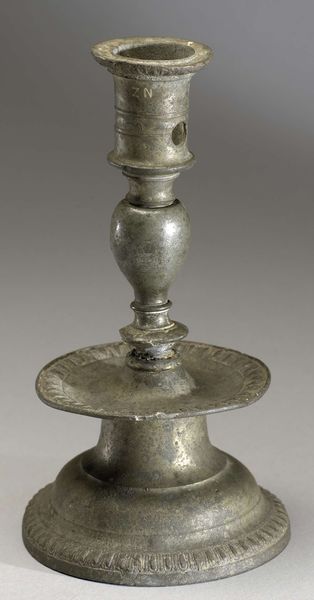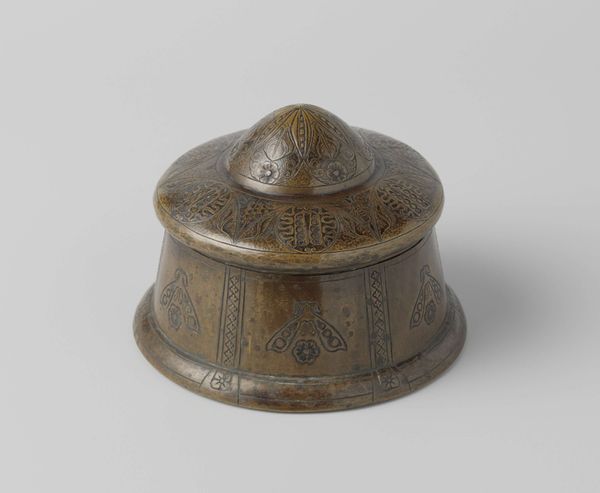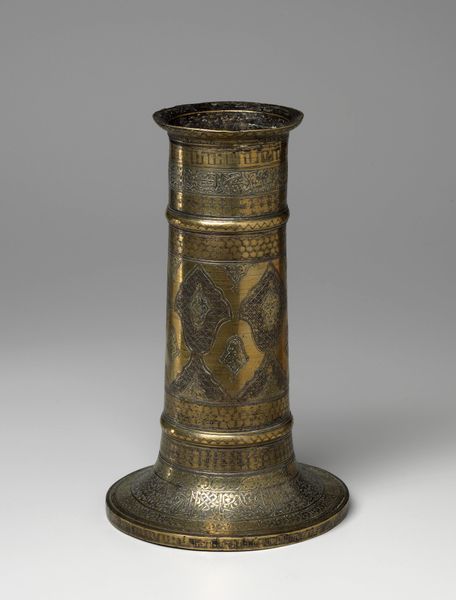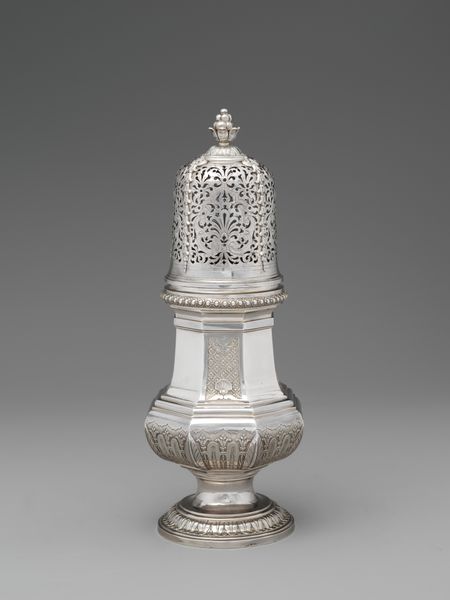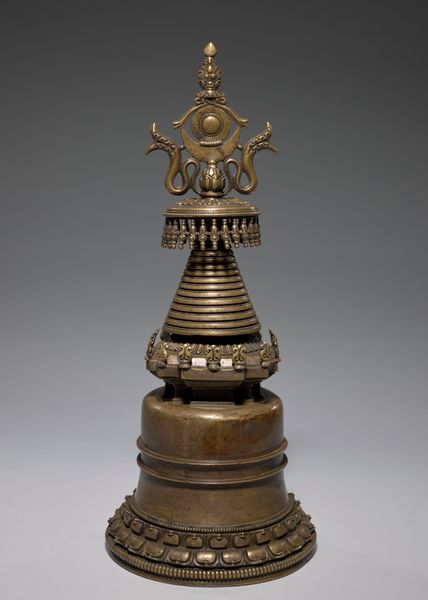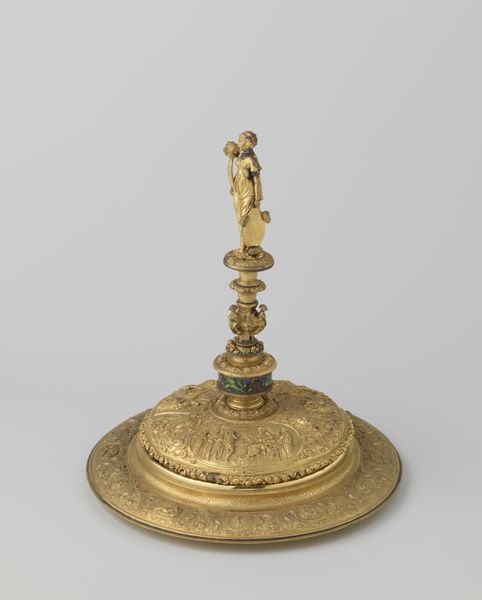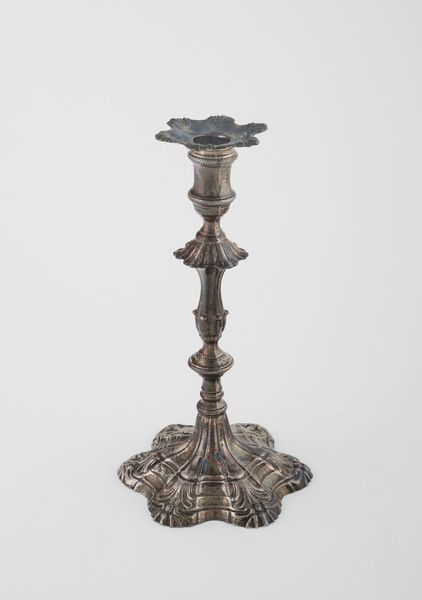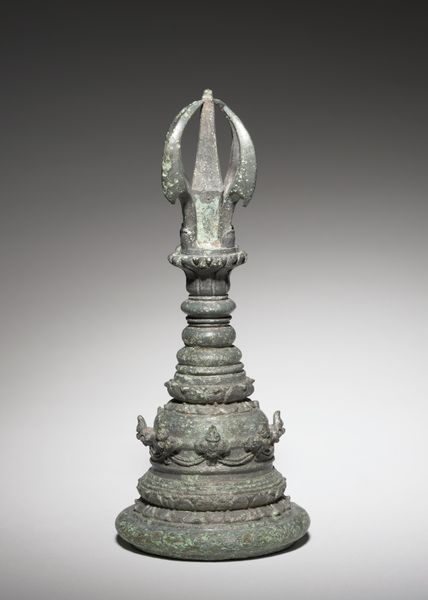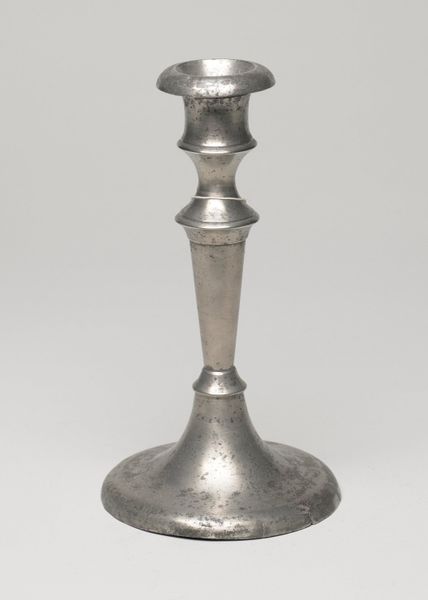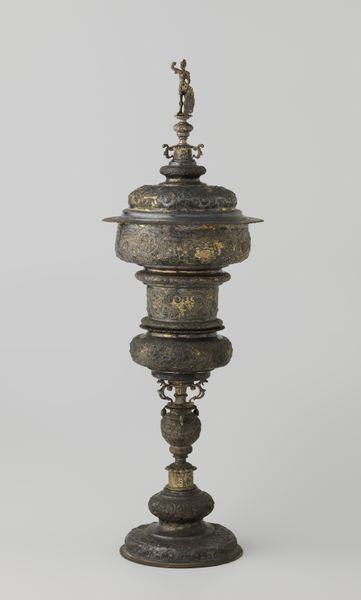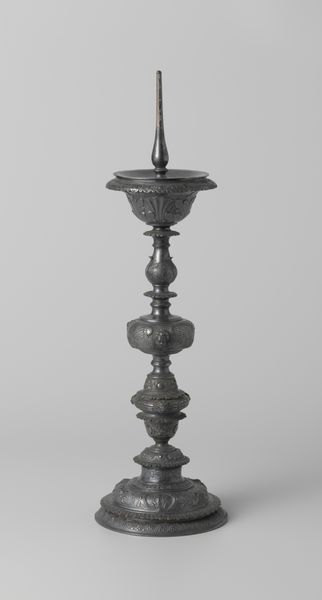
Hand Bell with Portrait of Lodovico Maria Sforza, 1451-1508, called Il Moro, 7th Duke of Milan, and Figures of Hercules c. 1491 - 1497
0:00
0:00
metal, bronze, sculpture
#
portrait
#
medieval
#
narrative-art
#
metal
#
sculpture
#
bronze
#
figuration
#
sculpture
#
decorative-art
#
italian-renaissance
#
miniature
Dimensions: overall (height by diameter): 15.2 × 9.9 cm (6 × 3 7/8 in.)
Copyright: National Gallery of Art: CC0 1.0
Curator: This exquisitely detailed bronze hand bell dates back to between 1491 and 1497, and it's attributed to Zuanne I Alberghetti. It features a portrait of Lodovico Maria Sforza, the Duke of Milan, and depictions of Hercules. Editor: It’s fascinating. My first impression is one of restrained power, even though it's relatively small. There's such weight to it, not just physically but symbolically, loaded with meaning. Curator: Absolutely. Looking at it from a material perspective, you can see how the bronze casting process allowed for such intricate detailing. Consider the labor involved in creating the molds, the smelting, and the finishing. It speaks volumes about the societal value placed on artistry and craftsmanship during the Italian Renaissance. Editor: The figure of Hercules certainly carries a lot of symbolic weight, evoking ideas of strength and heroic virtue, all traits that Sforza would certainly want to associate with himself. What about the inscription, running around the bell just under the handle? It appears to name the artisan responsible for its casting. How interesting to literally see his name attached. Curator: The Alberghetti name encircling the top really highlights how highly the craftsman was esteemed in this period, unlike previous ages where the patron was all that mattered. They were essential contributors to the artistic and cultural landscape. It elevates craft to high art. Editor: And the portrait of Sforza, prominently displayed, immortalizes him in bronze, aligning him with classical ideals through Hercules and the meticulous artistry on display. The ringing of the bell could have been interpreted in many different ways in period – perhaps a signal to herald a leader or invoke ritual, perhaps its ornamental status supersedes its usefulness. Curator: Exactly. The creation of such a lavish object underscores the power dynamics and consumption patterns of the era. A piece like this would have been both a functional object and a status symbol. The mold making, in particular, allowed for relatively faster and larger reproduction. It indicates something about material access and consumption in the era. Editor: Examining this piece truly is like peering into the complex mind of the Renaissance, where classical myth, portraiture, and meticulous craft converge to tell a layered story. Curator: I agree; seeing the layers of creation helps us consider art as more than aesthetic objects. Editor: Yes, seeing these artful components together opens a broader perspective on its role within the historical and political theatre of the time.
Comments
No comments
Be the first to comment and join the conversation on the ultimate creative platform.
